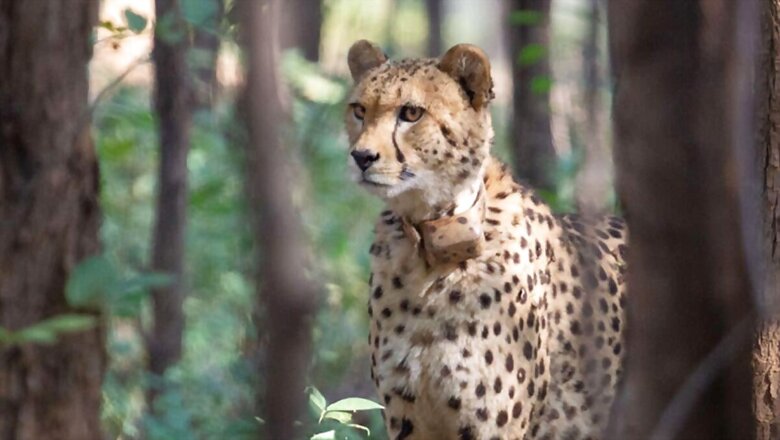Project Cheetah Faces Challenges After Felines’ Death, 10 Released Will Be Brought Back to MP’s Kuno

views
From torrid summer to now the humid monsoon days, unfamiliar weather conditions continue to take a toll on the African Cheetahs translocated to Madhya Pradesh’s Kuno National Park. Within a year of re-introduction, five of the 20 adult felines have died, including three new-borns.
Hit by the sudden death of a male cheetah last week allegedly due to septicaemia, the expert group has now recommended that all cheetahs be recaptured for evaluation. Only five felines are in the enclosures, rest 10 have been released into the wild.
INFECTION SCARE
The African cheetah that died on Friday had lesions on the neck, which is likely to have caused a systemic infection, according to experts. While the National Tiger Conservation Authority (NTCA) attributed the death to a “natural cause,” wildlife experts suggested otherwise.
South Africa veterinary wildlife specialist Prof Adrian Tordiffe said the problem was indeed related to radio-collars worn by cats for tracking purposes. “It is quite a unique problem and is associated with the very moist conditions in Kuno which got double the amount of rainfall that it normally gets at this time of the year. The constant moisture led to maceration of the skin near the collars, which led to infection and further infestation by flies and maggots. Eventually, it led to a systemic infection, causing septicaemia, and the animal died of a septic shock,” he told News18.
Experts suspect that the rest of the animals could be suffering from the same problem to some extent. The concerns grew after one of the Namibian cheetahs was also found with a similar issue during a preliminary examination. However, the feline was treated on time, and managed to recover.
WILDLIFE CHIEF TRANSFERRED
A total of 20 cheetahs, classified as ‘vulnerable’ on the IUCN list, were translocated to India from South Africa and Namibia as part of the government’s grand wildlife experiment. The animals are yet to fully adapt to the new and unfamiliar weather conditions and officials involved in the project say they are facing “problems which they did not expect”.
On Monday, the government also transferred Principal Chief Conservator of Forests (PCCF) JS Chauhan who had been monitoring the project until now. Chauhan was assigned the office of PCCF (production), Bhopal, while 1988-batch Aseem Shrivastava was appointed as the PCCF (wildlife), Bhopal with immediate effect.
WILL THE COLLARS BE REMOVED?
A senior wildlife veterinarian from South Africa and a radio-collar expert Dr Mike Toft has reached Kuno to check the cheetahs. In a meeting held on Monday, the Cheetah Steering Committee members also discussed the treatment plan and the protocol to be followed for evaluation of cheetahs, while deliberating on the use of radio-collars.
Talking to News18, South African expert Dr Tordiffe underlined that these radio collars are extensively used in South Africa, and they have not seen a problem due to them. “It is very rare that cheetahs would encounter any problem related to collars. It is just that there was also unexpected heavy rainfall that persisted… all of it created a perfect storm which led to a severe problem,” he averred.
If the radio collars are removed, the cheetahs will have to be put into the enclosures again for an undecided period of time until a monitoring plan is finalised.
“To release the animals without collars would be irresponsible, because we would not be able to monitor the animals effectively in a new environment. We might have to modify the collars. Also, this is not the issue of collars being fit incorrectly. They have not caused a problem until now when the conditions changed with regards to rainfall. Both Namibian and South African cheetahs have been affected, so it is not that collars were put differently and that is causing a problem. But it is something that we will have to address quite urgently,” he added.



















Comments
0 comment